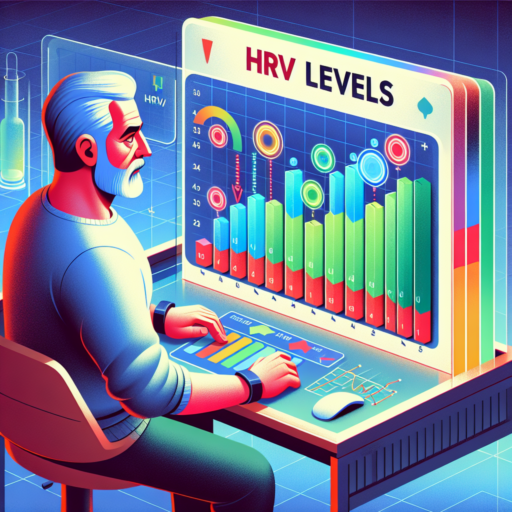What is a good level of HRV?
Understanding the importance of Heart Rate Variability (HRV) can be crucial for assessing your overall health and fitness levels. A good level of HRV indicates a healthy balance between the sympathetic and parasympathetic branches of your nervous system. While HRV can vary significantly from one person to another due to factors like age, sex, and fitness level, generally, a higher HRV is associated with good cardiovascular fitness and lower stress levels.
For most adults, an average HRV falls between 20 and 100 milliseconds (ms) when measured using a standard HRV monitor. However, it’s important to note that optimal HRV levels are highly individualized. Athletes and highly fit individuals, for example, might exhibit higher average HRV readings compared to those who are less active. Monitoring changes in your own HRV over time can provide more actionable insights than comparing your numbers with standardized charts or averages.
Daily lifestyle choices, such as diet, stress management, and sleep, play a significant role in influencing your HRV. Engaging in regular physical activity and mindfulness exercises can increase your HRV, reflecting an enhanced ability of your body to manage stress and recover from exercise. Conversely, consistent high stress, poor sleep quality, and a sedentary lifestyle can lead to a lower HRV, signaling potential health issues or increased stress levels.
What should my HRV be for my age?
Understanding what your Heart Rate Variability (HRV) should be for your age is essential for assessing your overall health and fitness level. Generally, HRV decreases as we age, but the specific number can vary widely based on individual health conditions, lifestyle factors, and fitness levels. A higher HRV indicates a more resilient and flexible cardiovascular system. Thus, knowing the optimal range for your age can be a valuable indicator of your heart health.
For younger individuals, especially those in their 20s and 30s, average HRV scores tend to be higher. As a benchmark, HRV scores in these age groups often range significantly due to factors such as stress levels, physical activity, and lifestyle choices. It’s critical to understand that there isn’t a «one size fits all» number. Instead, comparing your HRV to normative data for your specific age group can provide insight into your cardiovascular and autonomic nervous system’s health.
In middle-aged adults and seniors, lifestyle factors such as diet, exercise habits, and stress management play a crucial role in maintaining an optimal HRV. While the average HRV scores may decrease with age, engaging in regular physical activity, practicing mindfulness or stress reduction techniques, and maintaining a balanced diet can contribute to healthier HRV levels. It’s advisable to use HRV tracking tools that offer age-specific insights to better understand where you stand relative to others in your age bracket.
Should I worry if my HRV is low?
Understanding the implications of a low Heart Rate Variability (HRV) is crucial for assessing your overall well-being and fitness. A low HRV may indicate that your body is under stress, whether from physical exertion, lack of sleep, or emotional disturbances. It is essential to decipher the cues your body is sending and determine when it is necessary to take action.
Identifying the Causes of Low HRV
Several factors can contribute to a decrease in HRV. It is important to pinpoint the underlying causes to address them effectively. Common contributors include high stress levels, poor sleep quality, and a sedentary lifestyle. By identifying and modifying these factors, you can work towards improving your HRV and, by extension, your health.
When to Seek Professional Advice
While a low HRV can serve as a signal to re-evaluate your lifestyle choices, it is crucial to know when to seek medical advice. If persistent low HRV is accompanied by symptoms such as fatigue, shortness of breath, or chest pain, consulting with a healthcare professional is advisable. They can provide a thorough assessment and tailor advice specific to your health needs.
Improving your HRV is a journey that involves making lifestyle adjustments and being mindful of your health. Recognizing the importance of a balanced lifestyle, including proper diet, exercise, and stress management, is the first step. A proactive stance on understanding and managing your HRV levels can significantly contribute to your overall health and wellness.
No se han encontrado productos.
What level should HRV be?
Understanding the optimal level for Heart Rate Variability (HRV) is essential for monitoring your overall well-being and fitness level. HRV, which measures the variation in time between each heartbeat, is widely recognized as a key indicator of autonomic nervous system function and an individual’s cardiac health. However, identifying a «one-size-fits-all» number for HRV can be misleading, as optimal levels can vary significantly based on age, gender, and physical condition.
Factors Influencing Optimal HRV Levels
Determining the ideal HRV level involves considering several individual factors. Generally, a higher HRV indicates better cardiovascular fitness and stress resilience. Athletes and physically active individuals, for instance, tend to have higher HRV readings due to their enhanced heart efficiency. It’s crucial to understand that your optimal HRV may differ substantially from another person’s, reflecting your unique health and fitness circumstances.
Age and Gender Considerations
Age and gender also play a crucial role in determining your optimal HRV. Typically, HRV decreases with age, meaning that younger individuals usually have higher HRV scores. Regarding gender, studies suggest that there might be slight differences in HRV levels, with women showing different patterns compared to men, possibly due to hormonal influences. Therefore, when evaluating your HRV, it’s important to take these factors into account.
Evaluating your HRV and understanding its optimal levels require a personalized approach. While general guidelines can provide a starting point, the best practice is to monitor changes over time and consult with healthcare professionals to interpret the data effectively. This tailored assessment ensures a more accurate understanding of your cardiac health, helping to guide lifestyle adjustments and health decisions.




